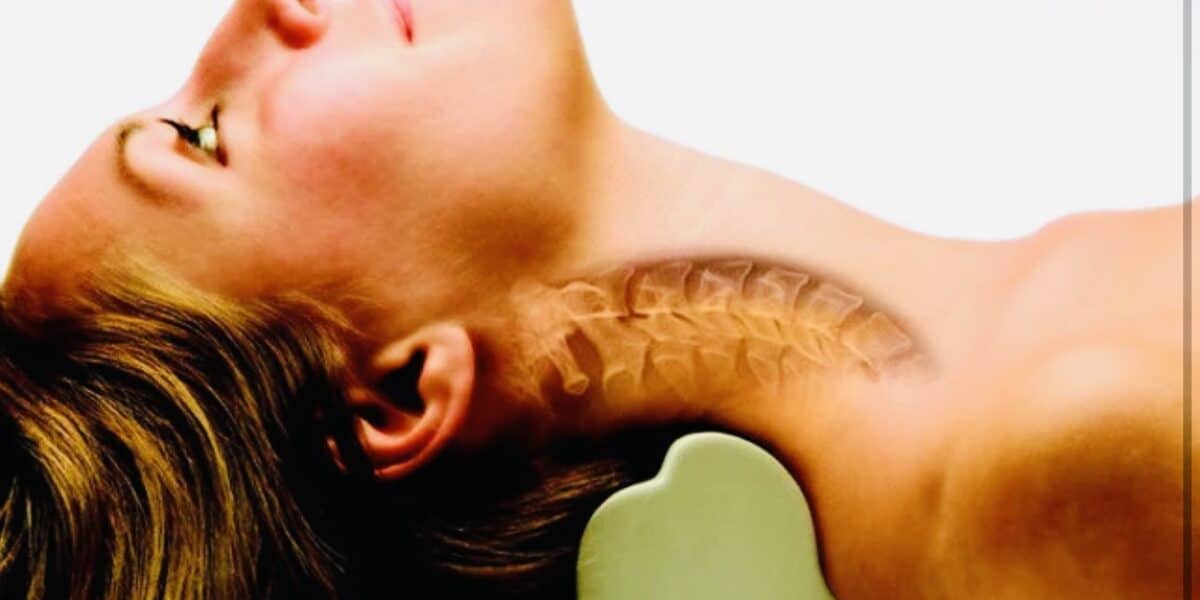By Sumaiya Farheen and Andrew Siyabalawatte, Nov 2023.
Do you find yourself wincing from the relentless grip of tension headaches that seem to settle in your neck, climb up to your head, and stubbornly refuse to let go? If so, you’re not alone.
As millions of individuals grapple with cervicogenic headaches – a puzzling pain that stems from the very foundation of your upper body.
Fear not, an enlightening journey awaits to uncover the secrets and bring relief. Welcome to the world of the trapezius muscle, forward head posture and ultimately, the upper cross syndrome – unsung heroes in the saga of poor posture and neck and shoulder tension with persistent headaches.
What Is A Cervicogenic Headache?
A cervicogenic headache, notable for their origin in the neck, often result from structural issues or dysfunction in the cervical spine. Typically, the pain initiates in the neck; as a consequence, it radiates to the head, resulting in head pain.
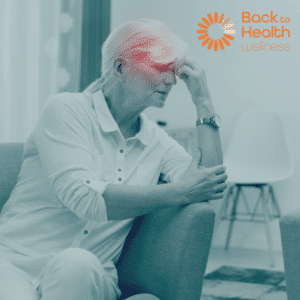
How Is Cervicogenic headache treated on the NHS
Your GP or Practitioner at your surgery or hospital will offer you several exercises to self treat the headache, though this may provide useful, finding the real cause behind them is the key to permanently alleviating them. In our opinion, guided by evidence, poor posture may be the leading contributing factor in the cause of cervicogenic headaches.
The Trapezius Muscle
The trapezius muscle, Also known as the traps, plays an important role in the forward head posture.
First, it is a large muscle of the back. It starts at the base of the skull moving down the neck, it then extends across the shoulders, and down the middle of the back, forming a trapezoid.
The trapezius muscle acts as both a posture stabilizer and a movement muscle. It directly stabilises the shoulder blade and extends the neck.
Bad posture culminating from standing or sitting for too long, will affect how the spine balances the head on the shoulders – as the stiffness in the spine increases, the upper, middle and lower trapezius muscle tightens to try and fix the head and shoulder blade position. Failing to do this successfully, results in a forward head posture and a postural adaptation known as the upper cross syndrome.
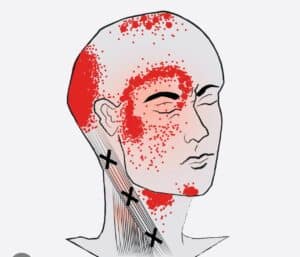
This adaptation can give rise to a tension headaches which can refers up the back of the neck, to the back of the head and then over to the front of the forehead and the eye.
Forward Head Posture
This posture is most commonly predisposed by sitting at the desk and looking at a computer screen, or even any activities which involve looking down, like knitting. Forward head posture increases stress on the neck (cervical spine) and the surrounding structures including nerves which supply the head, face, neck and shoulders.
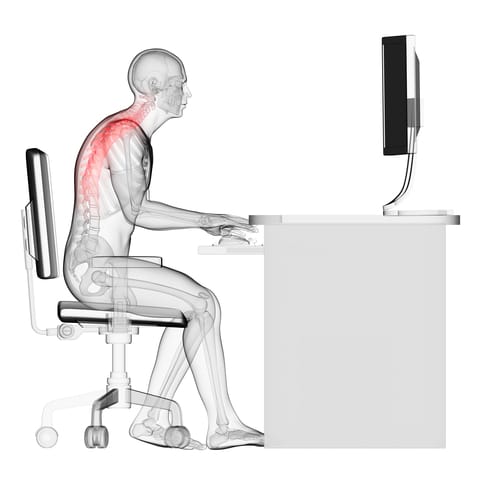
The Upper Cross Syndrome
To help manage forward head posture, the body creates a muscle imbalance known as the upper cross syndrome, which is caused by the weakening and lengthening of the posterior (behind) upper back and neck muscles, combined with the tightening and shortening of the opposing anterior (front) pectoral (chest) and neck muscles.
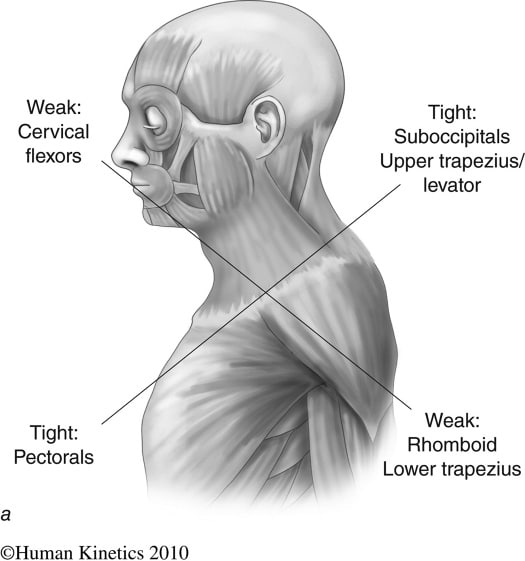
Cervicogenic Headache Exercises
One can manage and prevent cervicogenic headaches with exercises enhancing neck strength, flexibility, and posture. Here are our recommendations –
Muscle Stretching
Chin Tucks– Sit/stand straight, gently tuck chin towards chest, hold 5-10 sec, repeat 5-10 times.
Neck Rotation– Slowly turn head to right, chin over shoulder, hold 15-30 sec, repeat on left. Do 3-5 times each side.
Isometric Neck Exercises– Press hand on forehead, side, back, hold 5-10 sec. Repeat 5-10 times each. These exercises will target several neck and chest muscles at once.
Diaphragmatic Breathing– Inhale deeply through nose, expand abdomen, exhale slowly through mouth. Focus on breath for relaxation.
Posture Correction
This therapy uses a device (image below) to self-manage focused stretching of the spine and the surrounding tissues. Spine traction is a highly effective way to Improve neck curve and alleviate upper back and neck tension. This therapy is ideal for those with a straight neck and a flexed upper back – which, are both the outcomes of stiffness in the spine and tension in flexors of the neck and the trapezius muscle.
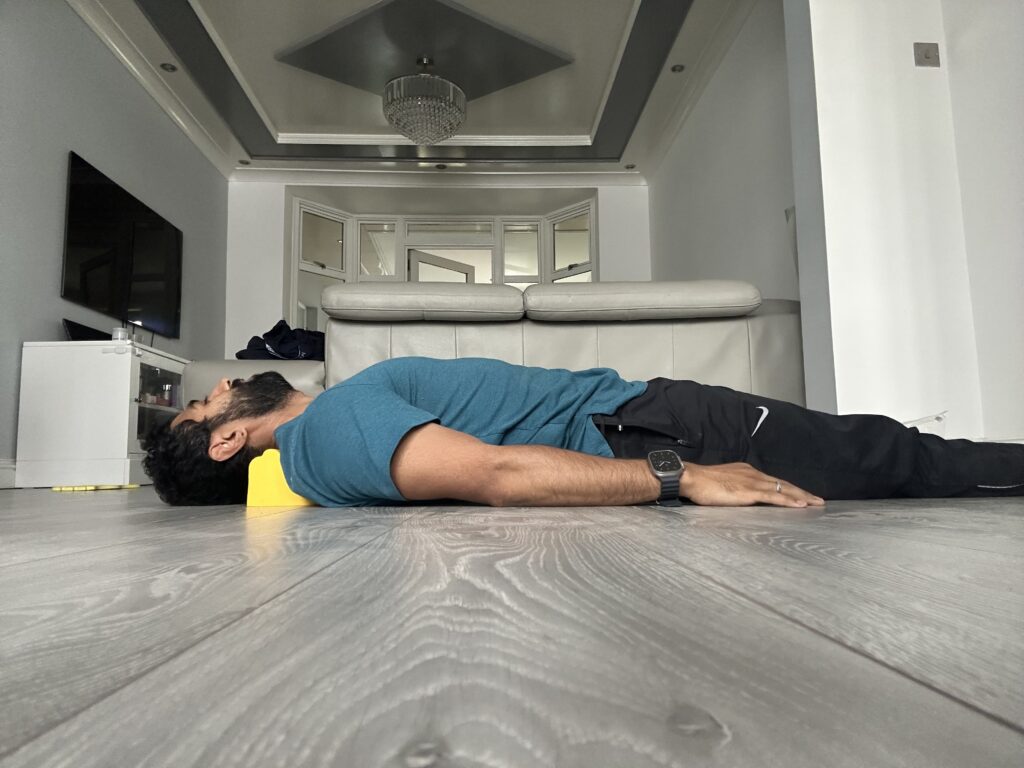
Cervicogenic Headache Treatment At Home Or Near Me
Posture correction is predominantly done at home as you have the device to use regularly. Combine the exercise with weekly/fortnight treatments as mentioned below, will give you the best chance of irradicating cervicogenic headaches for the long term.
Osteopathy– Osteopathy taps into the body’s self-healing power through a holistic approach to the interconnected musculoskeletal system.
By using manual manipulation, gentle techniques, and stretches, osteopaths enhance joint mobility, ease muscle tension, and promote spinal well-being. It effectively addresses cervicogenic headache causes, providing lasting relief.
Chiropractic Care– Chiropractors excel in diagnosing and treating musculoskeletal issues, emphasizing precise spinal adjustments.
Through skillful realignment of vertebrae and improved nerve function, they effectively alleviate muscle tension. Chiropractic care offers proven relief for cervicogenic headaches.
Massage Therapy– Massage therapy provides a valuable strategy for managing cervicogenic headaches. Skilled therapists target neck and shoulder muscles, releasing tension, boosting blood flow, and enhancing flexibility.
Regular massage sessions play a key role in preventing headache recurrence, addressing muscle imbalances, and fostering relaxation.
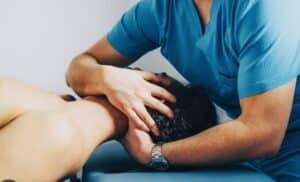
A Collaborative Approach for Optimal Relief
In the realm of cervicogenic headache treatment, each of these approaches—osteopathy, chiropractic care, and massage therapy—offers unique benefits. The ideal approach often involves a collaborative effort between these professionals to tailor treatment to the individual’s specific needs. Osteopaths embrace holistic interconnectedness, chiropractors excel in spinal adjustments, and massage therapists offer hands-on muscle relaxation. This collaborative approach provides the best chance for optimal relief from cervicogenic headaches.

